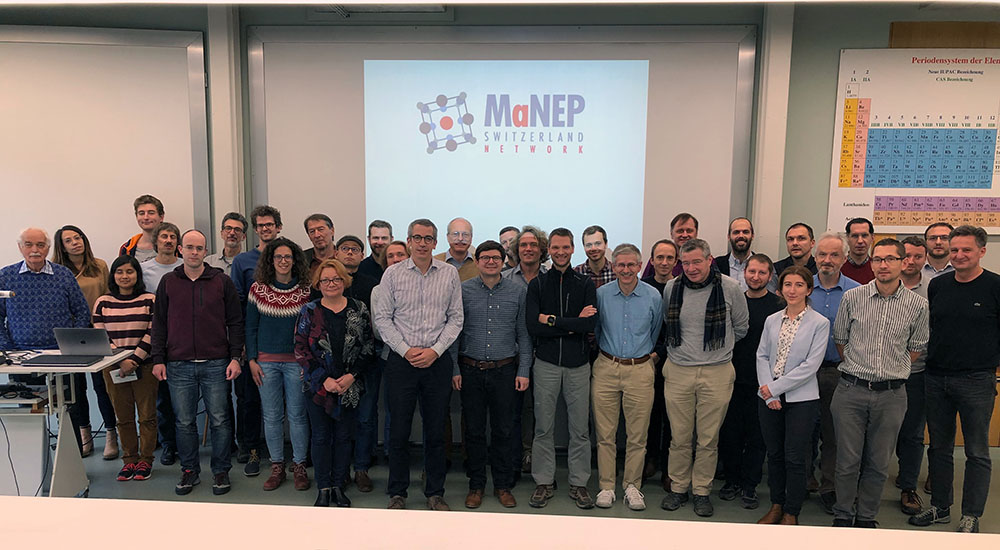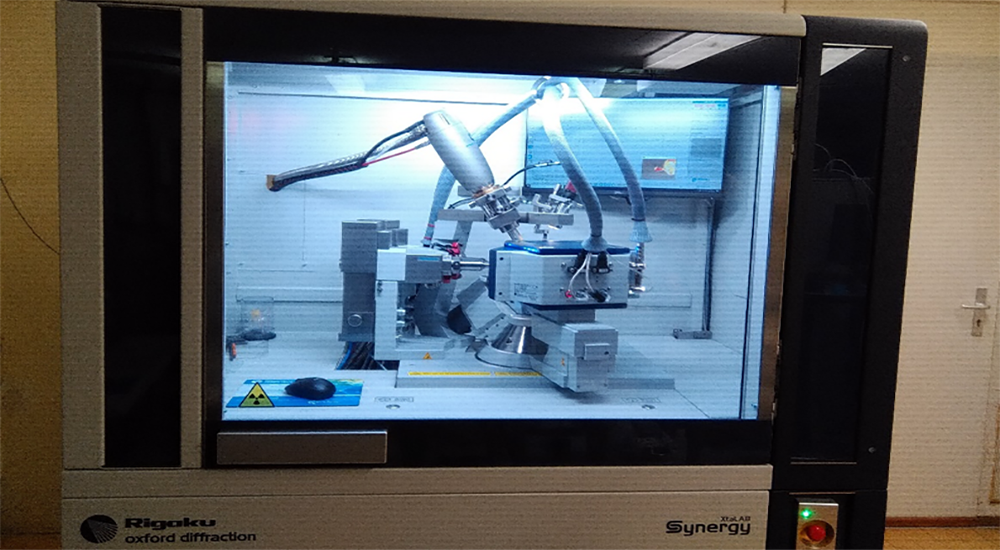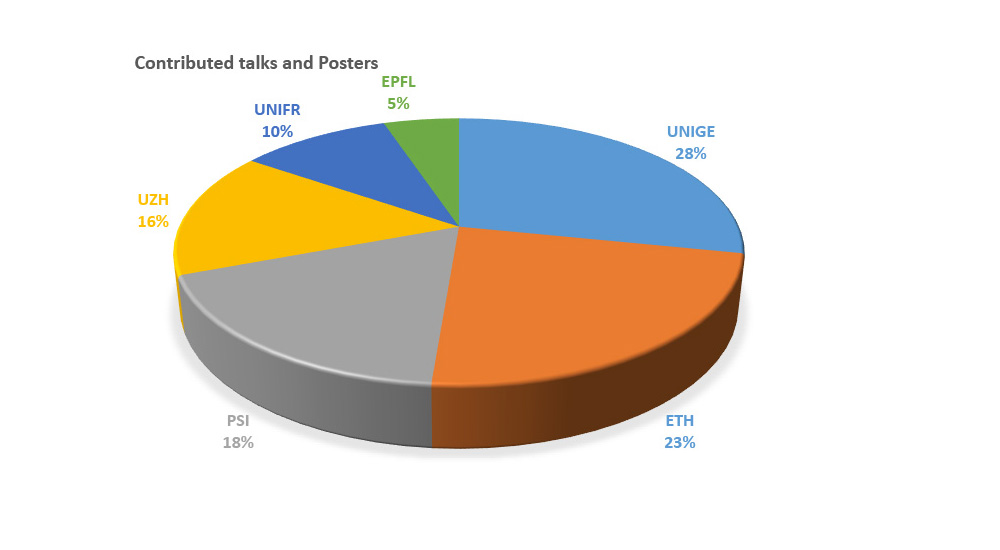|
|
|
|
|
At a time where collaborations are often driven by grant
proposals and shared funds, one may wonder if there is any interest in
maintaining an association such as MaNEP that does not provide money to
its members but asks them to pay. Of course there is the winter school
in Saas Fee and the meeting in Les Diablerets every other year, but the
organisation of such meetings does not require the infrastructure of an
association such as MaNEP, and in 2018, six years after the end of the
NCCR that is at the origin of MaNEP, this legitimate question might have
crossed the mind of some of the members.
|
|
|
|
If anything, 2019 has proven how useful it actually is to
have such an association in Switzerland. The research on new materials
with interesting electronic properties shows an impressive vitality
worldwide, yet the new NCCR campaign has not led to the creation of new
centres of competence that could fund and coordinate the research in
this field. In such circumstances, it is of the utmost importance to
maintain the link between the members of the community, and the MaNEP
association is a fantastic chance, not to say a unique opportunity, to
achieve this goal. Even more, it can act as the think tank that promotes
the emergence of new ideas and initiatives that will shape research in
this field in the future. The focus session on Magnetic Skyrmions at the
joint SPS-ÖPS meeting in Zürich in August or the one-day workshop on
Material Discovery that took place in Bern in November are excellent
examples of the kind of events that MaNEP can and should promote to
prepare the future.
|
I would also like to take this opportunity to thank Prof.
Christoph Renner, the first president of this association, and Prof.
Nicola Spaldin for their dedication during their terms as board members,
and to welcome two new members, Profs. Christian Bernhard (UniFR) and
Steve Johnson (ETHZ).
|
Looking at all the beautiful achievements reported in this
newsletter, the news faces, the numerous awards, it is clear that the
future of the research embodied by the MaNEP association is bright.
Let’s hope that, besides the 2020 edition of the Diablerets workshop,
next year will witness numerous initiatives within the MaNEP association
to push further the frontiers of this fascinating field.
|
|
|
|
What's new?
|
|
|
|
|

|
The MaNEP Network met at the University of Bern, Department
of Chemistry and Biochemistry, for a Workshop on Materials Discovery and
its annual Forum Meeting. During the workshop the principle
investigators of six leading materials discovery and synthesis groups at
the ...
|
|
|
|

|
The Laboratory of Advance Technology (LTA) in Geneva has
launched a new platform for chemical analysis and imaging. Open to both
academics and industry, this platform provides access to a nano-TOF SIMS
and an XPS, and is the only lab in Switzerland to provide access to
both of these complementary techniques.
|
|
|
|
|
|

|
A new single-crystal X-ray diffractometer was installed in
the Laboratory of Crystallography at UNIGE. This dual micro-focus source
diffractometer (Mo, Cu) is equipped with a new generation curved photon
counting X-ray detector (RIGAKU Hypix arc 150), allowing very fast
measurements since more data are collected in a single exposure. The
detector ...
|
|
|
|

|
This year MaNEP organized again a special session at the
annual Swiss Physical Society meeting that took place last August at the
University of Zurich. The MaNEP session focused on the recent
developments in the study of materials with novel electronic phenomena
arising from electronic correlations or topological properties.
|
|
|
|
|
|

|
The exciting programme of this year’s joint annual meeting
of SPS and ÖPG included a focus session on ‘Skyrmions in Magnetic
Materials’ for the first time. The inclusion of the session heralds the
rapidly developing Swiss-wide, interdisciplinary research effort into
these topologically nontrivial magnetic ...
|
|
|
|

|
From 22nd-24th October 2019, the international workshop
“Topology in Magnetism: Theory Meets Experiments (TME) 2019” took place
in La Plata, Argentina. Around 50 participants enjoyed three days of
focused talks and discussions on a range of topics related to topology
and magnetism ...
|
|
|
|
|
|
Irène Cucchi in the group of Felix Baumberger (UNIGE)
received the Flatlands 2019 poster prize for her work on two-dimensional
(2D) materials entitled “Microfocus laser-ARPES ...
|
|
|
|
|
|
Claribel Dominguez, in the group of Prof. Jean-Marc Triscone
(UNIGE), currently working on the exciting field of “oxide interface
physics”, received the iWOE26 poster prize ...
|
|
|
|
|
|
The American Physical Society has awarded its 2020 Aneesur
Rahman Prize for Computational Physics to Antoine Georges “for the
development of the Dynamical ...
|
|
|
|
|
|
Marta Gibert, professor at the University of Zurich, won the
iWOE prize for excellency in research. A prize for scientists below 40
who have demonstrated excellence in research ...
|
|
|
|
|
|
Edoardo Martino, PhD student in the group of Prof. Ana Akrap
(UniFR) and Prof. László Forró (EPFL), was selected to take part at the
prestigious Lindau Nobel Laureate Meeting.
|
|
|
|
|
|
Masafumi Horio, in the group of Johan Chang (UniZH),
received the prestigious High-Temperature Superconductivity Forum young
scientist research award at the Fall ...
|
|
|
|
|
|
Nicola Spaldin, Professor of Materials Theory at the ETH
Zurich and member of the MaNEP Steering Comittee received the Swiss
Science Prize Marcel Benoist for her ...
|
|
|
|
|
|
Scientific perspective
|
|
|

|
|
By Prof. Manfred Sigrist, ETHZ
|
This year in May the 25th anniversary of the discovery of Sr2RuO4 was celebrated with a dedicated
workshop at ETH Zurich. Sr2RuO4 has been the second superconductor found in the class of
perovskite transition metal oxides after the cuprates and has ever since played an important role in
the
field of unconventional superconductivity. One might expect that after
25 years such a workshop would be a mere wrap up combined with a nice
party. But it turned out completely different. Just a few months prior
to the event new experimental data turned things upside down.
|
|
|
|
Scientific highlights
|
|
|
|
|
|
The realization of Weyl semimetals (WSMs) with time-reversal
symmetry broken is one of the central issues in the research of novel
topological phases in condensed matter. Weyl semimetals are one kind of
exotic materials that host massless doubly degenerate Weyl fermions in
non-centrosymmetric or ...
|
|
|
|
|
|
By Jennifer Fowlie, UNIGE
|
X-ray diffraction is a ubiquitous tool used in many areas of
physical sciences for determining the structure of matter. There are
two particular experimental challenges in measuring an x-ray diffraction
signal; samples that are of too small a volume and atoms that are of
too small a radius. These two ...
|
|
|
|
|
|
|
Discover more MaNEP Network's research and innovations trough other publication highlights.
|
|
|
|
Portrait
|
|
|

|
What has been your main research activity and your most interesting scientific findings over the last few years ? My
research as a theorist is rather wide-spread across condensed matter
physics. One of my main interests and playgrounds though concerns the
interplay of interactions, quantum fluctuations and disorder, which
gives rise to an enormous variety of complex phenomena.
|
|
|
|
Upcoming events
|
|
May 3-10, 2020, Capri Island, Italy
|
|
|
July 6-25, 2020, Les Houches, France
|
|
|
|
|
(Photo credit: L. Windels/UNIGE, LTA, UNIGE, UNIZH, Flatiron Institute, Daniel Rihs, Philip Moll EPFL / MPI CPFS, PSI)
|
|
|
|
|
|

|
|
MaNEP Switzerland Network
|
|
24, quai Ernest-Ansermet - 1211 Geneva 4
|
|
|
|
|
|
|
|